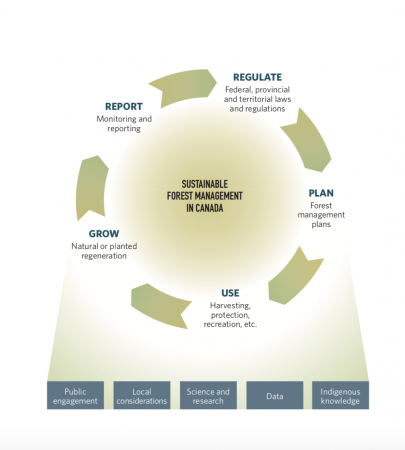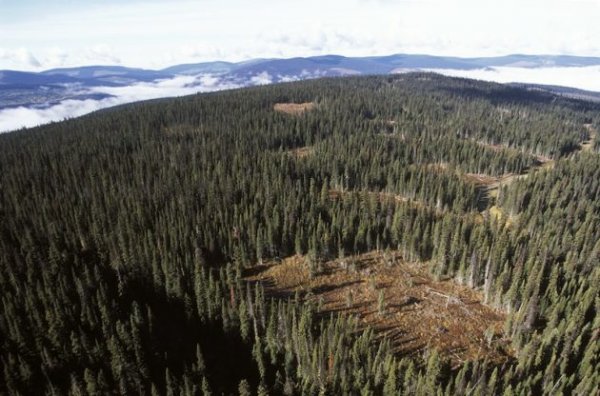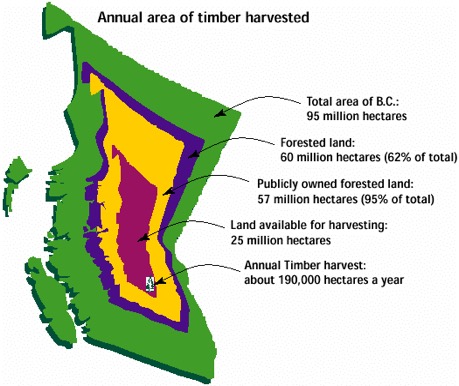Guide: Canadian forests are among the most resilient and sustainably managed forests in the world. They are subject to strict environmental supervision, careful management and extensive third-party certification. This is what customers who need sustainable biomass products have for the Canadian wood pellet industry.
Canadian forests are among the most resilient and sustainably managed forests in the world. They are subject to strict environmental supervision, careful management and extensive third-party certification. This is why customers who need sustainable biomass products have confidence in the Canadian wood pellet industry.
Canada has a good forest management record, more than 90% of the original forest covered by it still exists, and the network of protected areas is expanding day by day, representing the country’s biodiversity. Canada’s forest policy centers on the concept of sustainable forest management, and its basic goal is to strike a balance between “demand for forest products and benefits” and “maintaining forest health and diversity”.
Strict forest regulations, world-leading practices
93% of Canada’s forests are publicly owned-71% are provincial and territorial ownership, and 22% are owned by the federal government. The remaining 7% are privately owned. In some areas of the country, more and more forests are under the jurisdiction of the indigenous people.

As shown in Figure 1. Canada's forest management framework.
The permit holder manages the forest to ensure that the soil and water are protected, and the felled trees are replaced by ecologically suitable seedlings.
Wood pellet producers play an important complementary role to companies that have logging rights, which are often referred to as permits or lease rights. These companies extract high-value sawn wood, and where there is a market, extract pulp logs and inclined logs. The remaining harvest material, once called waste, can be used to produce wood pellets. This work is done under the authorization of forestry professionals.
The government that issues harvest rights has the responsibility to:
-Review and approve the company's forest management plan
-Monitoring forestry companies to ensure they are acting according to approved plans
-Tracking the forest felled from the ownership land
-Ensure that the harvested forest meets regeneration standards
-Strengthen the company's compliance with laws and regulations
Companies that fail to comply with forest management will face penalties, ranging from warnings and fines, from warnings and fines to suspension of logging rights or confiscation of timber. This kind of non-compliance is rare in Canada.
Protect the forest for the future
Canada has 348 million hectares of forest, making it the third most forested country in the world, after Russia and Brazil. Even after considering the establishment of cities and the conversion of agricultural land, Canada still has 90% of its original forest coverage. With an annual harvesting rate of 0.2%, Canada will always have the forests of the future. In fact, wood losses due to insects, tree diseases and fires exceed the annual harvest.

In order to ensure a long-term sustainable logging level, the provincial government will regularly conduct comprehensive timber supply audits and determine the logging level based on the following:
-The condition of the existing forest;
-the growth rate of existing forests and deforestation;
-how to manage wood and other valuable resources obtained from forests;
-and the choice of harvest rate.
The Timber Supply Review (TSR) program in British Columbia began in 1992. Using the latest review of the provincial administration, the province’s independent chief forester determined the annual allowable logging (AAC), which is the maximum amount of timber she decided to reasonably choose. The harvest will continue in the next 10 years and still support a long-term sustainable harvest level (usually the forecast period is more than 250 years).

figure 2. Source: www2.gov.bc.ca
According to Canadian law, forests must be replanted or regenerated after logging. The saplings planted must be the correct combination of different tree species from the same area, so that the forest can maintain its natural characteristics. In addition to artificial tree planting, forest rangers also rely on the natural regeneration of tree seeds in adjacent forest areas.
Protect biodiversity and other important values
Canada is a founding member of the Montre ́al Process created in 1994. The agreement was signed by 12 countries, which together account for 90% of the world's temperate forest area. The agreement is based on the following seven standards:
1. Maintain biodiversity.
2. Maintain the production capacity of the forest ecosystem.
3. Maintain the health and vitality of the forest ecosystem.
4. Protect and maintain water and land resources.
5. Maintain the contribution of forests to the global carbon cycle.
6. Maintain and enhance the social and economic benefits produced by forests.
7. Ensure an appropriate framework that supports laws and regulations.
In addition, most logging activities in Canada are certified by the following three third-party certification systems: Canadian Standards Association (CSA), Forest Stewardship Council (FSC) or Sustainable Forestry Initiative (SFI), which have a comprehensive certification system. Promote a wide range of habitats and age types, as well as standards and indicators for the protection of forest plants and animals, including aquatic and endangered species, forests with special conservation value, aging forests and important ecological sites.

Seeking natural balance
Canada's forests account for 9% of the world's forest coverage. About 24 million hectares of forests in Canada are protected, accounting for almost 7% of the country's total forest area. Another millions of hectares of land are located in remote and inaccessible areas, so they are basically unaffected by human activities. In addition, there are millions of hectares of land managed with special values, which have priority over forestry or other development.
Although Canadian wood pellet manufacturers are not usually involved in forest management and logging activities, responsible fiber sourcing is at the core of their business. A strong regulatory framework backed by independent certification, regulatory compliance and enforcement means that the Canadian wood pellet industry and its global customers can be satisfied with its product sources and its contribution to sustainable forest management.




























